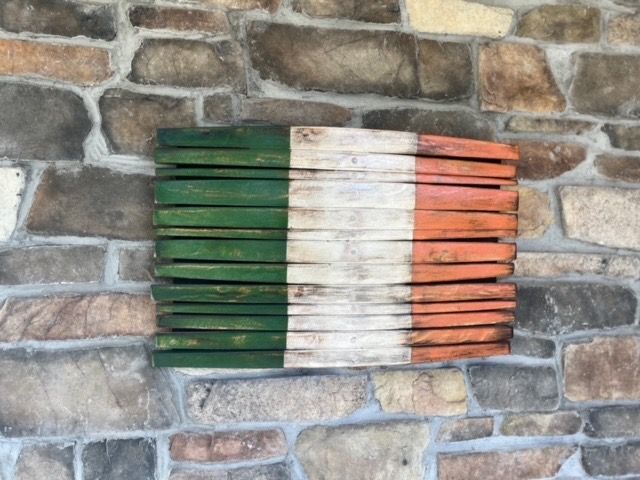Robert Mitchum in 1949.
By Peter McDermott
This is our fourth installment checking in with our community of artists and writers to see what they’ve been turning to, culture-wise, in these difficult sheltering-in-place times. So far, we’ve gotten some great leads — such as the original “The Twilight Zone,” which is being streamed on Netflix — as well as reminders.
As pointed out in a different context last week, YouTube is a wonderful resource and our first contributor here reveals that there are a great many old movies that people love just a few keystrokes away.
Honor Molloy was raised in Dublin through age 8, and relocated then to Allentown, Pa. The Queens resident is the author of the novel “Smarty Girl: Dublin Savage” and the play “Crackskull Row.”
I want to glut myself of Film Noir — and always imagine that I can watch about a dead-even dozen a week, but then, cooking and eating dinner and swilling wine tanks my time and my imagination. And then there's the constant revving of the adrenaline engine when I go outside — the masked, the unmasked — as if we all live in Noir-Town these days now.
After my play “Round Room” played during 1st Irish 2020, I'd planned on diving into my latest piece, which is …a noir. Hence the noir-watching. I do manage to view six or so in a month. My writing process is normally slow, but now it is glacial. But I'm not worried. When will theatre — with a living, breathing audience — take to the stage again?
So, in the meantime, I live in a vivid black & white world peopled with tarts and dames and skirts. Guys in fedoras, with heaters in their trench coats.
Doncha member me?
Maybe.
Maybe I metcha a hundred years ago.
Or, was it just now? Just before yesterday. Or last week. Or?
Could be I metcha at the pictures. Or . . . in a filum.
There full noir movies on YouTube but here are the links to the trailers of particular favorites: “Out of the Past” (1947) — One of the quintessential noirs, with a young Robert Mitchum at his heavy-lidded best; “Gun Crazy” — A noir hothouse of sexual tension with John Dall and Peggy Cummins; “The Killing” (1956) — Stanley Kubrick's leap into greatness, with that blond satan Sterling Hayden.

Kevin Holohan was born, raised and educated in Dublin and resides with his family in Brooklyn. He is the author of the novel “The Brothers’ Lot.”
At first I couldn't read, I couldn't write. I re-re-watched “
Derry Girls.” I doodled bookmarks on the corners of envelopes like my grandfather used to. They suggested books to me. One chose “The Decameron.” Another Russell Hoban’s “Pilgermann.” A third A.L. Kennedy's “Day.” I buzzed my hair. I started editing my unruly 500-page novel. I have been working on this book for too long. It, too, needs a severe haircut. It is about too many things. I think at heart it is about a made-up neo-Dark Age country with a made-up history that has to confront the fake story it has been telling itself. I thought I was writing an allegorical satire.

Writer Joseph Goodrich was born in Minnesota and lives in Queens. His next book, “Unusual Suspects: Selected Non-Fiction” (pieces from Mystery Scene, Ellery Queen's Mystery Magazine, Alfred Hitchcock's Mystery Magazine), will be published in July.
I've been moving between re-reading “In Search of Lost Time” by Proust (since time is plentiful) and mystery fiction (since when will we be released from this situation is the question on everyone's lips). I've re-read all of Dashiell Hammett's novels, for instance. Time and Crime, in other words.

Marcel Proust.
Artist Helen O’Leary grew up on a farm in County Wexford. She has lived in various regions of the United States over the past three decades.
The plan was to spend the spring in Leitrim and study lichens’ color but I didn’t make it out before the lockdown. Instead, I came to central Pennsylvania, tore up the yard and a parking space and have grown a working dye garden. I have poured over medieval plants and dyeing recipes, early Christian whelk pits in Mayo and Sligo( purple), and am now lost in annals about the significance, economics, class, symbolism etc. of color. Starting out with the “Anatomy of Color” by Patrick Baty, I am slowly poking my way through Pliny the elder’s natural history and Carol Mavor’s “Blue Mythologies,” with a stack more of books/journals at my feet.
The series is concluded, for now.











